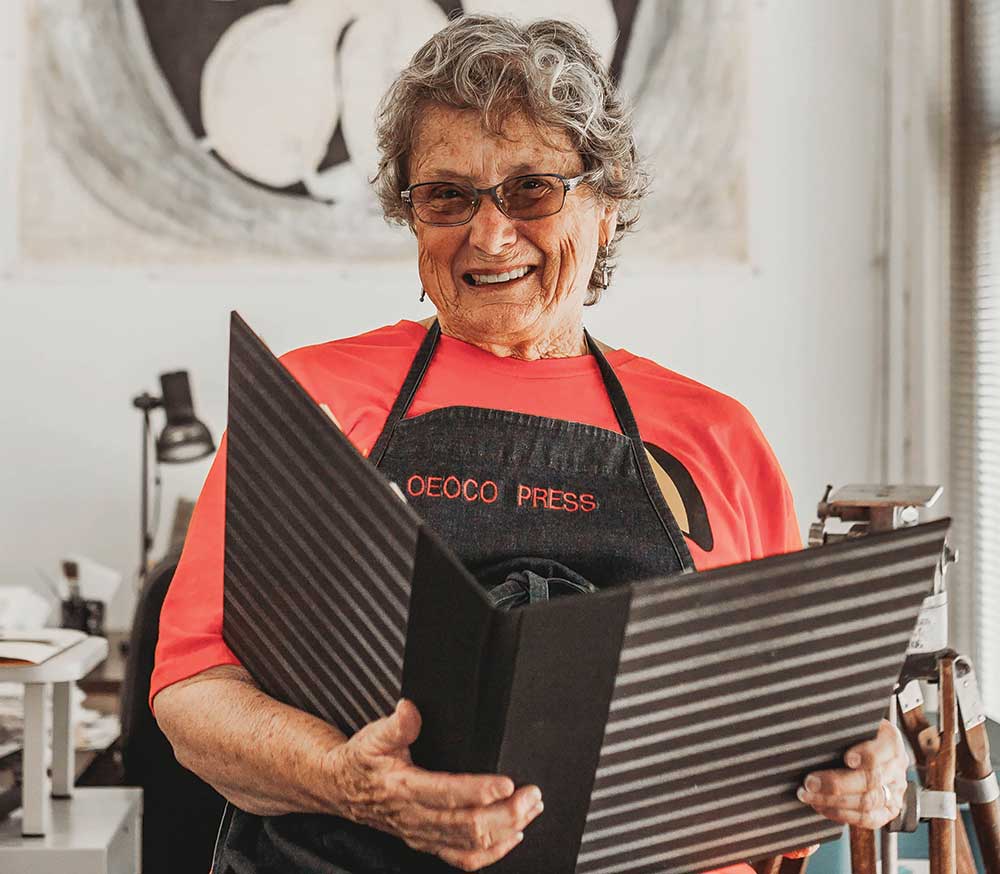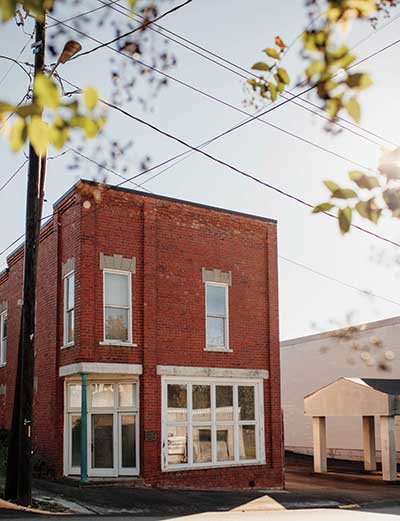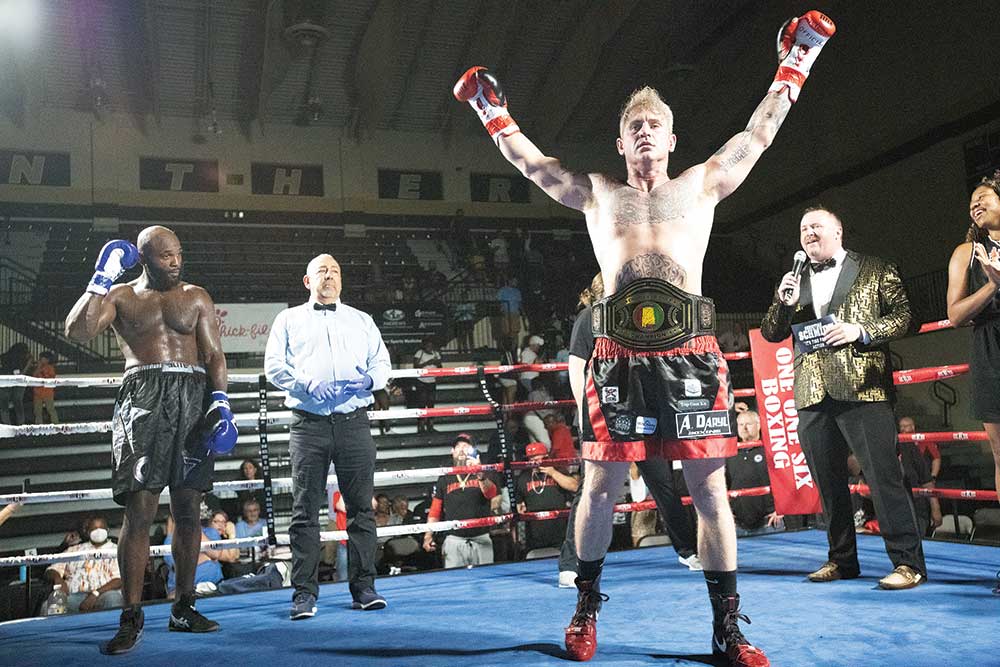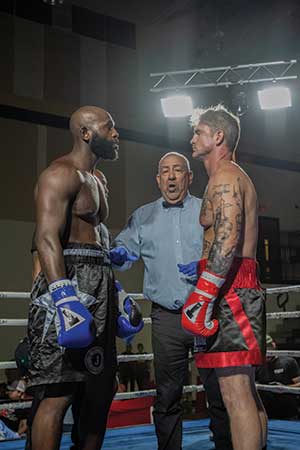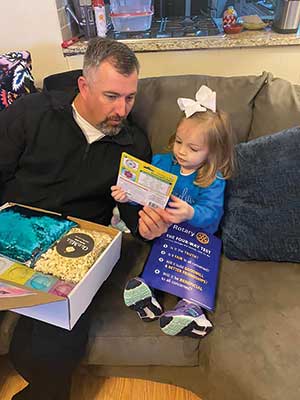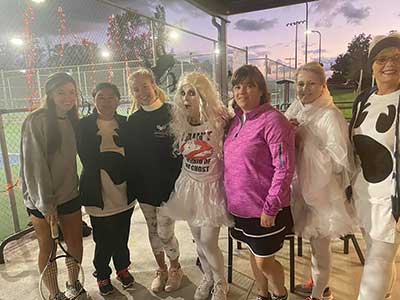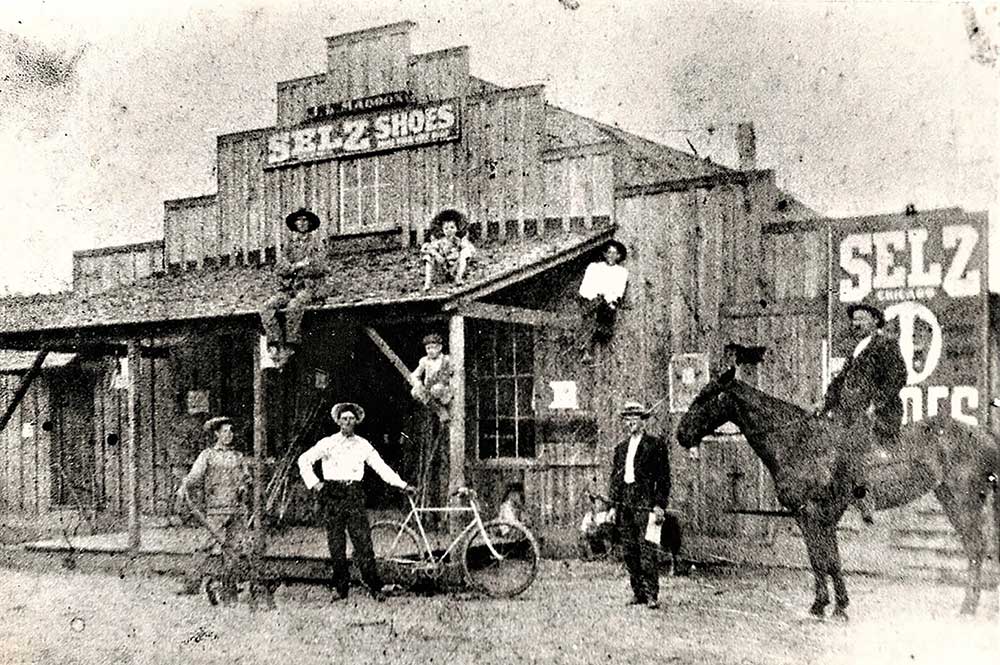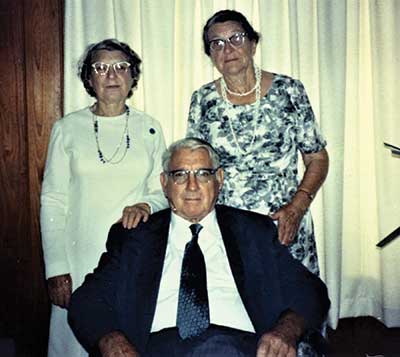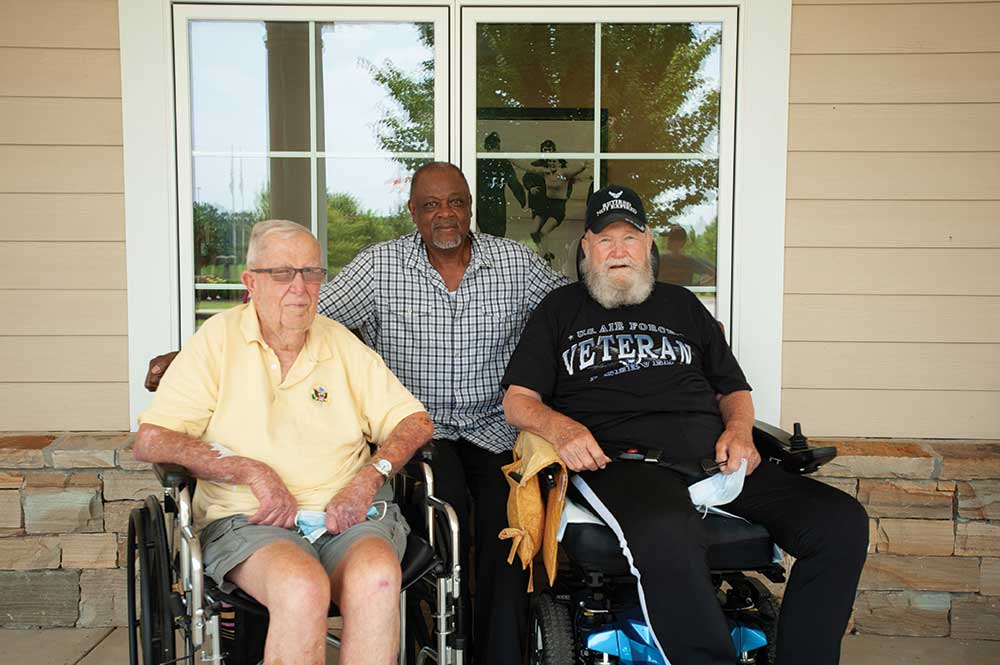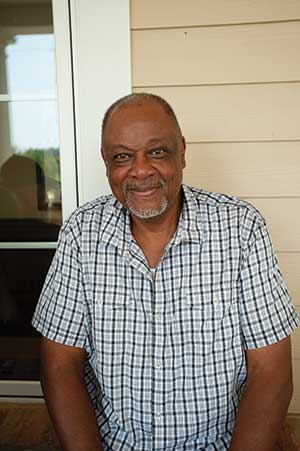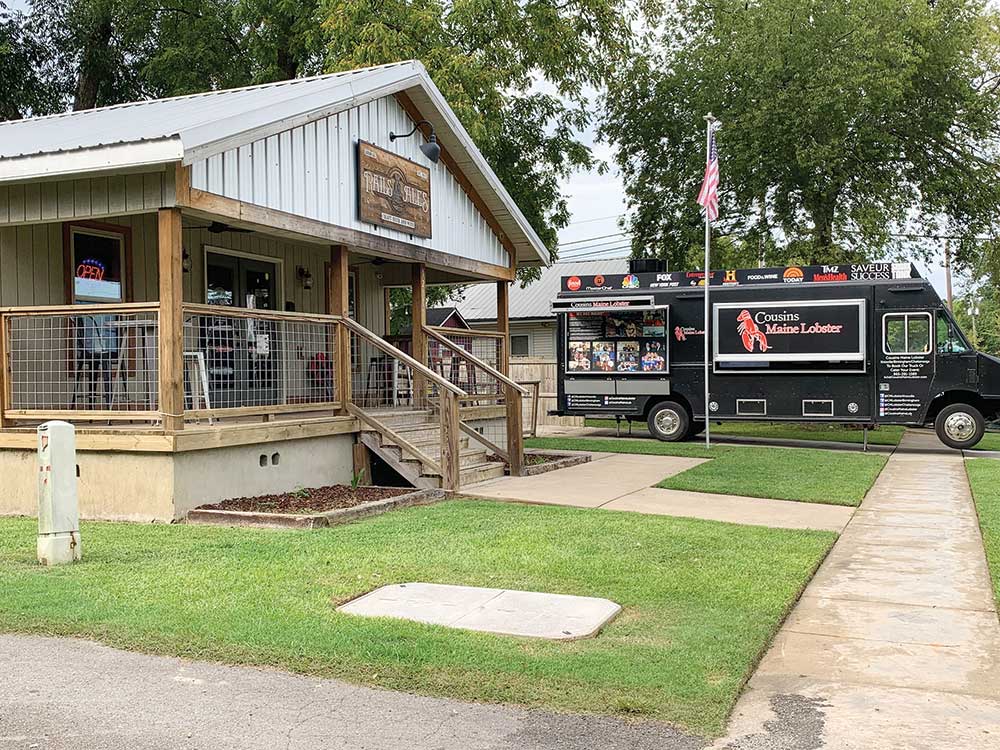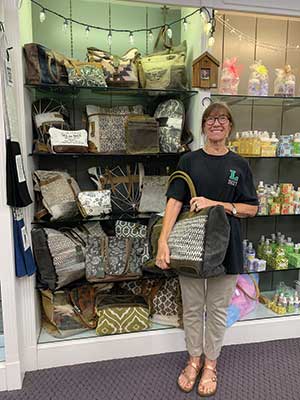Artist turns old Ragland bank building, own creations into works of art
Story by Scottie Vickery
Photos by Meghan Frondorf
Ragland artist Mary Ann Sampson is perhaps best known as a book artist whose handmade creations “are a personal stage and a memory stick for a life lived.” Dig a little deeper, and you soon discover that her portfolio, much like her life, is diverse, rich and ever-changing.
In addition to creating hundreds of one-of-a-kind books that are featured in national and international collections, she counts sculptures, drawings, paintings, etchings and photographs among her work. A former nurse, Sampson changed course and followed her passion for art after she married and had a child.
Today, at 80 years old, Sampson is still finding new ways to express herself, whether through new art mediums, singing or most recently, tap dancing. “I’ll try almost anything,” she said. “I’ve been real fortunate to have lots of ways to self-express.”
Many of those forms of self-expression were on display this past spring at the Gadsden Museum of Art, which hosted a retrospective exhibit of Sampson’s work. “I put together a lot of things I’d never shown before – drawings, etchings, as well as books,” she said. “My studio is filled with stuff now that I don’t know what to do with.”
Ray Wetzel, director of the art museum and curator of the collection, praised her unique works. “Her artwork is full of complicated simplicity in the way of the labor and craftsmanship of these delicate paper constructions that oftentimes look machine made,” he said. “It is the same passion that goes into her work that gives me a sense of calm that within the chaos hidden in her work she is also telling the viewer everything will be all right.”
Childhood influences
Born in a small town in North Carolina, young Mary Ann spent a lot of time on her grandparents’ farm, which laid the foundation for her love for rural life. “I loved the freedom of barefoot days and playing until sunset with my cousins,” she said.
She also remembers creating masterpieces at the kitchen table with her two sisters. The young artists were inspired by their mother’s cousin, Ruth Faison Shaw, the originator of finger painting. A teacher in Rome during World War II, Shaw was inspired when she saw a child with a cut finger smearing iodine on the walls. She later developed finger paints and had them patented in 1931.
“We would just get in the kitchen and paint that way, and I loved playing in the paint,” Sampson said, adding that she enjoyed smearing the different colors together on the paper to see what took shape. She also loved drawing and making scrapbooks, and she remembers being encouraged by her first-grade teacher, Mrs. Woodard. “I always loved my teachers who had artwork plastered all around the walls,” she said. “She was very instrumental in instilling a love of art in me.”
Sampson’s father worked at a hardware store, and her mother later became a seamstress to bring in some extra money. “She had a treadle sewing machine,” which was powered by a foot pedal, Sampson said. “Mom taught us to sew long before we took it in high school.”
Today, Sampson has two sewing machines, including her mother’s, and she uses the skills she learned as a child to bind many of the books she creates. “She was very methodical, and I think I get a lot of that pickiness and attention to detail from her,” Sampson said. “Of course, I can be very messy in my painting, too.”
Despite a lifelong love of art and the desire to pursue it in college, Sampson took the more practical route and went to nursing school at Wake Forest University. A nurse for 10 years, she fell in love with a medical student she met at the hospital. She and Larry Sampson were married in 1964, just before he joined the Army and was stationed in Texas and Vietnam.
Upon his return in 1966, they moved to Birmingham where he did his residency at UAB, and she was a cardiac nurse at St. Vincent’s Hospital. He later opened his dermatology practice in Birmingham’s eastern area and practiced medicine for more than 30 years.
Through it all, Sampson’s passion for art never wavered, and when daughter Anna was 2, she returned to school to study art. She attended both Birmingham-Southern College and Samford University, eventually earning a double major in art and Spanish. “It took a long time because I was married and had a family, but I finally graduated in 1982,” she said.
After graduation, she rented studio space in Birmingham from an artist friend who owned a printing press, which intrigued Sampson. “I loved printmaking,” she said. “I love the surprises you get when you run something through the ink. You’re never quite sure how the etching and scratching will turn out.”
A simpler life
After a few years of renting a space, Sampson knew it was time to find a permanent home for her studio. “I had looked in Birmingham, but I couldn’t find anything I could afford,” she said. “Mostly lawyers could afford what I was looking at, and I knew my income wasn’t going to be anything like that.”
She and her husband owned a tract of land in St. Clair County, and she realized a return to the rural lifestyle she loved as a child was beckoning. She eventually bought the old two-story Ragland Bank, built in 1910, and renovated it for her studio.
“We were driving through Ragland one day, and I saw this turn-of-the-century building,” she said. “The roof had fallen in, it was boarded up in places, and there was a big faded ‘For Sale’ sign on it. It was just the kind of structure I was in the market for. I said, ‘Larry, stop! That’s it, that’s it!’”
Just as she does with her art, Sampson poured her heart into renovating the building. “It didn’t cost a lot of money to buy it, but it took a pile of it to get it up to snuff,” she said. After calling in a friend who had helped restore Sloss Furnaces, she replaced the roof – twice – during the renovation process. Since the mortar between the bricks had literally turned to sand, workers had to remove each brick by hand and rebuild and mortar the entire structure. “I was working in there throughout all of this,” Sampson said.
By the book
After participating in a book arts workshop at the University of Alabama, Sampson’s interest was piqued. When she attended a show of artists’ books in Richmond, Va., her future path was set. “I fell in love with them,” she said, of the handmade books. “I just loved the way you could express yourself in an artistic way through books.”
She began to experiment with using books as an art form and was intrigued by the possibilities. “If you’re a painter, you use a brush and paint. In book arts, you don’t have the canvas. You take the quality or essence of what a book is and make it into a place where you put your art,” she said.
She took workshops with some of the greats in the book arts world, including Keith Smith and Tim Ely, and she began creating and showing some of her own works of art. She bought a letterpress for her studio, and she also began experimenting with binding techniques. Inspired to learn all she could, she eventually earned a master’s in book arts at the University of Alabama.
“When I started doing books, I just stuck with it and kept going until I had enough to do a show. When the first piece sold, it just happened,” Sampson said, seemingly still amazed by the good fortune. “I just kept exploring, and it just happened.”
Sampson said she has always been interested in the human form, and much of her work reflects that. “My subject matter is usually puppets, string people and articulated figures,” she said. “I have a real interest in how the human figure wiggles about.”
Many of Sampson’s books are letterpress, one of the oldest forms of printing, and she painstakingly creates them letter-by-letter in her studio using a variety of beautiful papers. Letterpress “has this beautiful history that dates back hundreds of years. I can get excited about different kinds of type, but I’m sure the world couldn’t care less,” she said with a laugh.
In addition to painting covers, printing the words – many of the books feature poetry – and illustrating with pencils or paints, Sampson uses a variety of materials, including cloth and leather. She binds her own books, sewing some and using paste, linen thread or wire for others. “I just love to explore new mediums.”
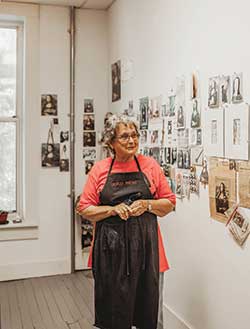
As one show led to another and then another, Sampson began making a name for herself. She met Bill and Vicky Stewart, owners of Vamp & Tramp, Booksellers, who traveled the country selling artwork and books. “They carried some of my first books with them and sold every book I had,” she said. “It’s wonderful to have someone take the time and their good, hard-earned money to invest in what you’ve done.”
Sampson named her studio the One-Eye Opera Company, a nod to some of her early book creations that focused on music themes. She founded the OEOCO Press (using the initials of her studio’s name) with the mission of creating limited-edition, letterpress and one-of-a-kind books. In addition to creating her own, she has collaborated with other artists and poets on unique art pieces.
Although she has some individual book collectors who own her work, “the public doesn’t know what to do with artists’ books, by and large,” she said. Many of her pieces, which range from hundreds of dollars to thousands, are in library collections, and Vanderbilt University boasts one of the largest collections of her works. Her books have found homes and been exhibited all over the world – from Tennessee, North Carolina and New York City to Canada, Mexico City and Germany.
A quieter life
Although she is still creating, Sampson, who has macular degeneration in one eye, is no longer setting the type for her books. Her artwork temporarily took a backseat for about six years after their Shoal Creek Valley home was destroyed by a tornado in 2011 and while her husband, who passed away in 2017, battled Parkinson’s disease. She now lives just next door to their original home in an old house made from lumber from the Moundville train depot. “Everyone calls it Railroad House,” she said. “It’s an interesting home. It’s small, but it’s all I need.”
She spends her days enjoying the quiet and visiting with friends and family, including her daughter, son-in-law and grandsons, who live nearby. She also enjoys gardening and discovering new talents. For the past year, she’s been taking voice lessons and learning to tap dance. “I sing in the choir, and I’d been wanting to take voice lessons to learn more about singing and projecting,” she said.
After enrolling in a voice class at Shalita Clark’s studio in Springville, Sampson was persuaded to take a tap class, as well. “I’m learning a lot, and I got to dance onstage at the Birmingham-Jefferson Civic Center,” Sampson said. “I’m having a lot of fun.”
She’s also enjoying being back in the studio and playing around with new techniques. Most recently, she experimented with a painting technique that uses oils and cold wax, relying on YouTube videos for instruction. “I don’t have much hope for this, but I still enjoy experimenting with new mediums,” she said.
That’s because, as an artist, she can’t stop creating. “It’s a passion,” she said. “You just love it and are so grateful that you can do it.”











